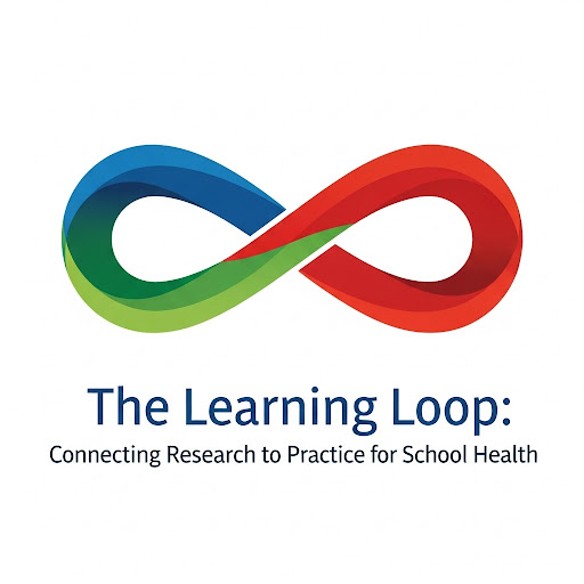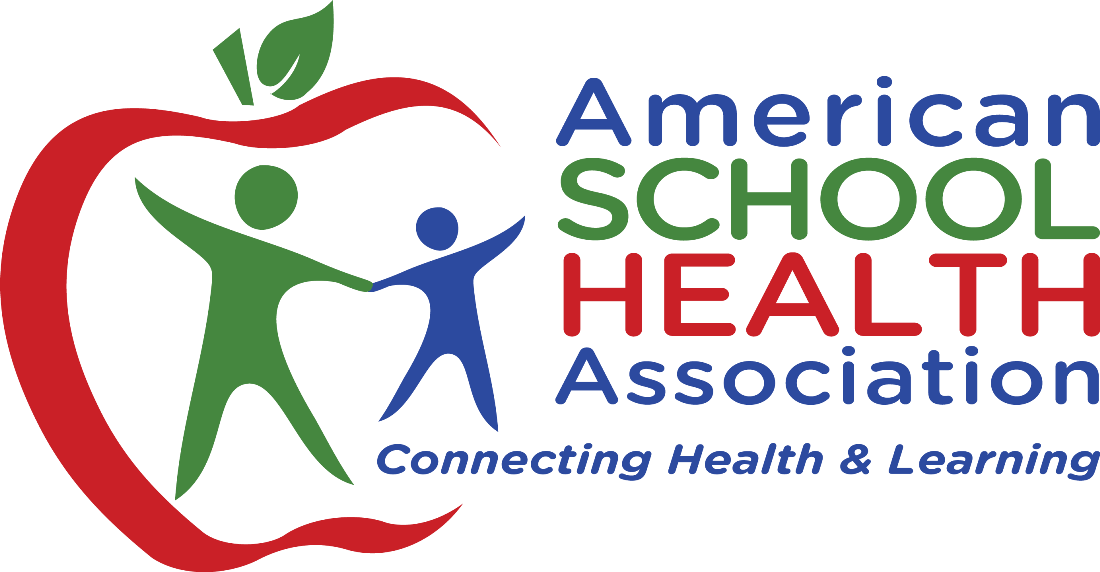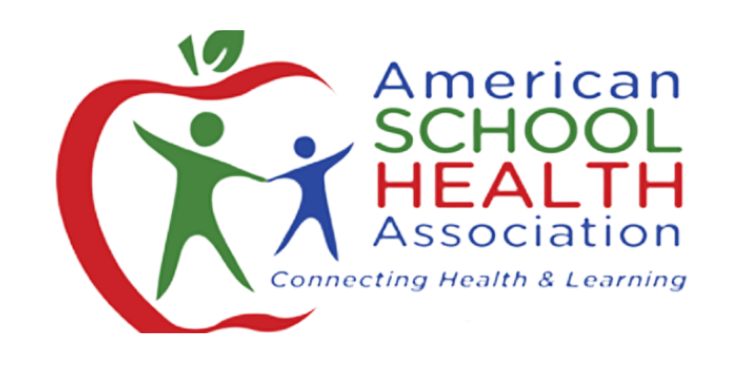The Learning Loop: School Safety and Disruptive Threats
The Learning Loop

Welcome to The Learning Loop, where we connect you with leading school health researchers and practical, evidence-based strategies for educators.
In our first edition, Elizabeth Cook, Content Specialist at the American School Health Association speaks with Dr. Sarah Stilwell and Dave Kobel, primary authors of "What's in a Shame? Rethinking School Safety in the Face of Disruptive Threats," recently published in the Journal of School Health (April 2025).
Meet the Authors
Dr. Sarah Stilwell

Research Focus: Comprehensive School Safety, Program Evaluation, Youth Violence Prevention, Positive Youth Development.
As Research Faculty at the Institute of Firearm Injury Prevention and with the National Center for School Safety, Sarah's work bridges research and practice, informed by her experience as a former educator. Her expertise includes community-based research, program management, and mixed-methods data approaches.
Education: Ph.D. in Education and Psychology, University of Michigan.
Dave Kobel

Areas of Interest: School Climate, After-School Interventions, Positive Youth Development, WSCC Model Implementation.
As Training Coordinator at the National Center for School Safety, Dave brings a unique perspective from his time as a science teacher and current wrestling coach, allowing him to connect with the entire educational ecosystem. His focus is on practical application within schools.
Education: B.S., Central Michigan; M.P.H. (Health Behavior & Health Education), M.A. (Educational Leadership & Policy), University of Michigan
Thank you for sharing your wisdom with us, Sarah and Dave. Let’s get into it! In the aftermath of an active shooter event at school, most folks focus on the event itself and not necessarily the influence the event has on the behavior of other people. In your article–you speak specifically about a somewhat common phenomenon that occurs after an active shooter event at school –and that’s the uptick in hoax violence threats.
Q:What exactly is ‘hoax violence threat’
A: These can range from vague social media posts to detailed bomb or shooting threats called into schools or reported through various channels. While not all threats are made with the intent to harm, they still require a significant response and can cause widespread fear, disruption, and emotional stress for students, staff, and families.
Q: Can you theorize why this phenomenon occurs?
A: There are several possible explanations. First, media coverage of school shootings often creates a “contagion effect,” where the extensive attention given to these events may influence others to mimic the behavior, even if only in threat form.
For some youth, especially those seeking attention, notoriety, or acting out due to distress, making a hoax threat might seem like a way to assert control, be disruptive, or test boundaries. Students and others may not grasp the full consequences of their actions, viewing the threat as a prank.
In times of heightened anxiety, these behaviors can also emerge as a dysfunctional way of coping or expressing distress. It’s important to note that the offenders of this phenomenon represent a relatively small population, while creating high levels of unrest.
The article specifically talks about shaming as an ineffective strategy.
Q: Can you share a bit what shaming may look like in the context of a hoax violent threat?
A: Shaming a student for making a hoax threat typically involves publicly condemning or humiliating them through visible disciplinary actions, harsh labeling, or punitive measures. This often reflects a zero-tolerance approach that focuses on blame rather than addressing underlying issues like mental health or trauma.
Q: Why doesn’t it work?
A: Shaming is ineffective because it can increase feelings of isolation and resentment, pushing students further away from positive support. More effective strategies focus on understanding the student's motivations and providing restorative, supportive interventions that promote accountability and reintegration into the school community.
Over the past several years, we’ve seen an increase in the creation of Anonymous Reporting Systems (ARS). I believe at this point 21 states mandate the use of them, including my home state Wisconsin.
Q: Can you explain what these are?
A: Anonymous Reporting Systems, or ARS, allow students, staff, and other community members to seek help and report concerns. While states have differed in whether these systems are anonymous or confidential, how tips are triaged, and the funding to support these programs, all ARS allow tipsters to share concerns without fear of repercussion. Many states in which ARS are not mandated have still seen adoption at the city, district, or building level. Right now, over 50% of K-12 schools have an ARS in place.
When the Wisconsin ARS was initially introduced, I recall that many of us in student services, myself included, were quite concerned about its potential for misuse and questioned whether its benefits would truly outweigh the potential costs. However, the research seems to have proven me very wrong!
Q: Can you share about the impact of ARS?
A: ARS saves lives. A 2024 article by Thulin, et al., Firearm-Related Tips in a Statewide School Anonymous Reporting System, showed that a single state had 18,024 tips submitted over four years. Of these tips, 1,039 resulted in mental health interventions, 109 “saves” in which suicide was imminent, prevented 38 acts of weapon-related violence on school grounds, and stopped 6 planned school attacks. Furthermore, in 89% of violent school incidents, the attacker had selected a target prior, and 90% of violent school incidents are preceded by someone noticing a concerning sign (National Threat Assessment Center, 2019).
Q: Beyond just ARS, what are some other effective ways schools can prevent active shooter situations and address school violence more broadly?
Safe schools are fundamental not only for preventing youth violence and active shooter threats, but also for supporting academic success, mental health, and prosocial development, especially given the significant amount of time students spend in school. To foster safe school environments and deter threats, school violence requires a comprehensive, multi-faceted, and multidisciplinary approach. This can include fostering trusting student–adult relationships, implementing robust social-emotional learning (SEL) programs, using behavioral threat assessment protocols, ensuring non-exclusionary disciplinary practices, and cultivating a positive school climate are critical to preventing violence before it escalates.
School safety efforts must prioritize both psychological and physical safety, support all members of the school community, including students, caregivers, educators, and administrators, and be rooted in a long-term commitment to promoting positive youth development. Achieving and sustaining such efforts requires shared responsibility across the school community. When everyone is engaged, schools can build a culture of care, vigilance, and prevention that goes far beyond reactive measures. Recognizing that all schools operate within different contexts, a comprehensive approach to school safety allows for adoption of programming that complements a school’s local context.
This is the learning loop–so we always close with how to bridge that gap between research and practice.
Q: What are one to two things that a school or district can do tomorrow to implement the learnings from your article?
A: If you have an ARS in place,
- Ensure all integral parties are adequately familiarized with the processes, including parents, guardians, bus drivers, and extracurricular coaches/sponsors. There are many who may hear things but may not know where to go with their concerns, or may have a fear of repercussions. Early detection approaches require an effective response time to ensure that potential threats are addressed prior to escalation, and failure to act on tips or information will decrease the effectiveness of various strategies. If tips are made through the Anonymous Reporting System, and they are not treated with the necessary seriousness, students may stop utilizing the system.
- If your school does not yet have an ARS in place, you might consider working with your administration and school board to identify and implement one. While the National Center for School Safety does not endorse specific systems, there are many systems that can be adopted by individual school districts, consortia of districts, or individual schools.
Q: What are one to two long term strategies to undertake?
A: Continue working to ground professional practice in A Positive Youth Development Approach to School Safety. ARS are a huge component of the Attentive Environment and leads to improved psychological and physical safety for youth, and in turn positive youth development. These efforts are complementary to many existing efforts in schools, such as the implementation of the WSCC Model, trauma-informed practices, and restorative practices.
Q: If folks are looking for additional information or resources, where should they go?
A: The National Center for School Safety has a trove of free resources around Anonymous Reporting Systems:
- Reducing Firearm-Related Violence Through Anonymous Reporting (Video)
- Anonymous Reporting Systems (Podcast Episode)
- Getting Buy-In for Anonymous Reporting Systems (Webinar)
Q: Final thoughts on the topic.
There are better tools than shame to prevent ARS abuse, such as restorative practice and standard juvenile justice practices. While hoax threats are highly disruptive, ARS save lives and promote positive youth development.
Practitioners in states without an ARS can advocate for their adoption to their state and district level elected leaders. Implementing and sustaining comprehensive school safety efforts requires that everyone within the school community is committed to this collective effort. Safety is not just the responsibility of a few individuals; when everyone works together, it fosters a culture of vigilance, respect, and proactive care.
When we take a comprehensive approach to school safety, where all students feel healthy, safe, engaged, supported, and challenged, we can decrease the prevalence of this issue while elevating the health and safety of all learners.
Thanks for joining us on the Learning Loop! Find something particularly insightful or thought provoking? Reach out to us on our channels and let us know!

